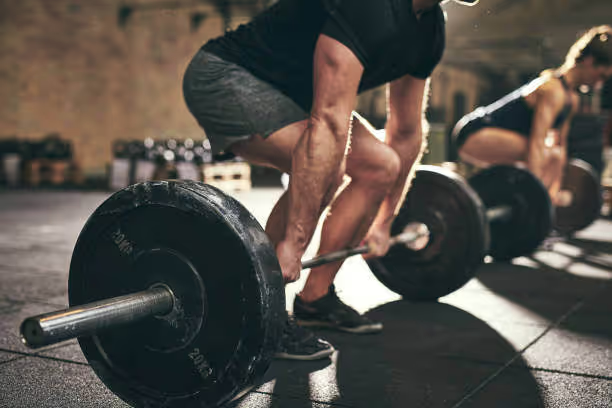Resistance Training for Hypermobile Athletes:
Hypermobile athletes should prioritize exercises that enhance stability and proprioception. To increase stability, the first thing we need are strong muscles surrounding our hypermobile joints. Where our connective tissue has excessive laxity, or stretch, we can make up for, by providing stability through increased muscle size and strength. Hypertrophy training, which will be explained in depth in the next blog, is a highly evidence based method to start building stability for our hypermobile athletes. To adequately challenge our muscles to induce hypertrophy, or muscle growth, we need to choose a stimulating amount of resistance. A good rule of thumb when choosing your working weight is that you should be falling somewhere into the 6-12 rep range. When choosing your weight, the first set is where you should be falling into the higher end of that rep range (around 10-12 reps). If you are continuously hitting the same amount of reps for each set, for example: 12,12,12 or 10,10,10 then the weight is not heavy enough. For hypertrophy, it is ideal to have 2-4 sets of each exercise in which you are training to 1-2 reps in the rank or reps in reserve (RIR) and then failing on the last set of the 2-4 sets.
Below are some examples of an adequately challenging stimulus with the last rep of the last set being to failure where you are either unable to lift it again despite putting in full effort or where your form fails:
Set 1: 12 reps (2 RIR)
Set 2: 10 reps (1 RIR)
Set 3: 8 reps (1 RIR)
Set 4: 6 reps (form failure)
Set 1: 11 reps (1 RIR)
Set 2: 8 reps (1 RIR)
Set 3: 6 reps (failed the 7th rep)
Set 1: 12 reps (2 RIR)
Set 2: 9 reps (1 RIR)
Set 3: 7 reps (form failure)
Set 1: 10 reps (2 RIR)
Set 2: 9 reps (1 RIR)
Set 3: 8 reps (1 RIR)
Set 4: 7 reps (failed the 8th rep)
Exercise Choice for Hypermobile Athletes:
When choosing what exercises to do in order to start hypertrophy training, we want to look for the most stable base of support to use. This usually happens to be machine based movements, as they decrease the available planes of motion for us to move in. Below is an example of more vs. less stable exercise variations when choosing your exercises. I choose to go in depth regarding lower body movements as these tend to be the most challenging when it comes to finding stable movements.
Any time a hypermobile athlete is training under load, it is imperative to emphasize proper form and alignment in every exercise, paying close attention to joint positioning to avoid overextension. In the last blog, there are photo examples of positions of hyperextension vs. stable positions. This is extremely important to be aware of, especially for hypermobile athletes as those who are hypermobile often struggle with proprioception, or our bodies awareness of its position in space. It can be difficult to sense whether or not we are hyperextending our joints, so developing that awareness is key before adding other variables that challenge stability. Once a hypermobile athlete has developed the ability to achieve strong and stable positions, they can be introduced to new variables to challenge their stability. Examples can be exercises that involve more moving parts in more planes of movement, exercises that decrease your base of support such as single limb balance exercises, exercises with uneven load, power/ explosive exercises and more.
The Importance of having the Guidance of a Physical Therapist: Hypermobile athletes must develop a keen awareness of their bodies and learn to distinguish between discomfort and pain. If an exercise feels unstable or causes discomfort in the joints, it's important to modify or seek alternative movements. A physical therapist can help develop proprioception, modify positioning to become more stable and help determine appropriate loading for hypermobile athletes. If you are hypermobile and want to feel more comfort and stability throughout your life and your sport, it’s important to follow all of the steps listed above. For help improving your positioning, schedule a free discovery call with one of our doctors here at Conquer Movement and get ready to live with more stability!
Dr. Kylie Miller
Performance Physical Therapist
Wilmington, NC
Follow here for more performance tips: @conquermovementpt

